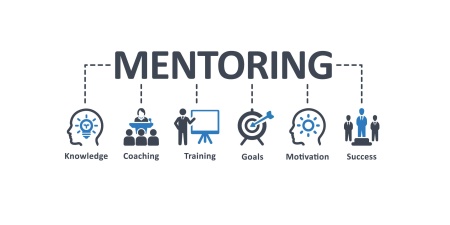by Thomas J. Armitage, site-seeker, inc.
Here’s a fun game. In your next meeting, ask the group how they prefer to communicate with companies.
It seems like a simple question, but as you’ll find out, there are lots of answers.
Form fill? Email? Phone call? Live chat?
It will be different for everyone, since many factors come into play, like who the company is, what the needs are, and how quickly the buyer needs a reply.
Although it’s used in our personal lives daily, text messaging is so often overlooked by businesses as a method of communication and customer service.
It’s time to better understand the value behind text messaging for business and how to implement it into your daily operations.
Owned Data Is the Real MVP
When Facebook, Instagram, and Whatsapp crashed this past October, they lost about $100 million in advertising alone.
That shows just how much both SMBs and enterprises rely on the Facebook ad network to help get their messages and promotions into the feeds of buyers.
But imagine if that resource was gone. Or, if ad costs grew beyond your means.
The argument for owned data is nothing new, but it gets brought to the surface whenever an advertising channel fails to deliver.
Databases are so important because it gives businesses the ability to communicate directly with their customers without the need to rely on “pay for play” models or ad networks for delivery.
The business can fully control the frequency of their communication.
Within databases, email marketing and text message marketing have become the two most important channels.
What is SMS?
It’s significantly more expensive to acquire a new customer than retain a current one.
Most reports tell you it’s somewhere between 6-to-7 times less expensive to retain existing customers. And I’ve read that as little as a 5% increase in retention can generate up to 25% more in revenue!
That’s why companies put full-blown retention programs in place to help keep customers happy.
A big part of that is customer service.
SMS (short message service) is another word for “plain text” text messaging (as opposed to MMS or “multimedia messaging service” which allows you to send images and videos.)
Texting is one of the easier additions to a customer service program since text technology can typically be integrated into already-running programs.
It can also use the same framework that customer service teams already have in place within their traditional methods.
Key Stats on Text Messaging
More folks own smartphones than ever before.
3.8 billion (!) to be exact.
From a poll carried out by SimplyTextin, text message marketing spend will grow from $57 billion in 2015 to $83 billion by 2024, an increase of 46%! On top of that, 60% of businesses are set to increase their text message marketing budgets in the near future.
The average open rate of an email is 20%, while the average open rate of a text message is 98%. And 90% of texts are read within the first three minutes of being sent!
But, despite almost 40% of businesses embracing text message marketing in some way, only 13% let consumers respond. That means these companies are using it purely to send out promotional messages (outbound) but are failing to use it as an actual two-way customer service communication tool (inbound).
Outbound vs. Inbound
Like email, text messaging can be broken down into two types.
Outbound are like text “blasts” that are scheduled to go out to a pre-set list of audience members in order to drive them to take some sort of action. That action can be to click on a link, view a promo, or make a purchase. You’ve probably received these texts from your favorite retailer.
This requires a marketing-focused strategy and can offer some big wins in terms of lead acquisition and lead nurturing. Sales folks should also consider how they are texting with prospects.
Inbound, on the other hand, operates more like live chat. It’s less marketing, and more of an extension of your customer service channels. It uses text to allow two-way communication with potential or current customers.
MobileMonkey, a leader in SMS marketing, says that 75% of consumers are comfortable being texted by a business. In fact, it’s often how they choose to start customer service chats.
That is – when they are able.
From speed to convenience, texting offers a better experience for those looking to hold a conversation with a business in a format they feel most comfortable.
Best Practices for a Better Customer Experience
Despite research and proof that customers WANT to be communicated with via text, less than half of businesses have a formal text messaging program in place. That’s compared to 80% of businesses that rely on email for customer acquisition and retention.
For example, my furnace broke the other day.
I contacted two local HVAC companies via online chat. Both used chatbots to hold a conversation with me. I submitted both requests within five minutes of one another. They both took my information and promised to get back in touch with me soon.
The first called me within 5 minutes. I booked a service call, and they came to my house that week.
To this day, the second company still hasn’t responded.
What’s the takeaway?
Tools are no good if you’re not going to use them, or use them properly.
Here are some best practices to keep in mind when managing your text message efforts.
Implement a Software
A text message program doesn’t involve having your customer service team using their personal cell phones or entering customer contact information in their phone’s address books.
That will not only lead to wasted time and an aggravated staff, but it’s impossible to track.
Instead, you’ll need to select a text message tool that maintains a database of customer information (or one that can integrate with your CRM). Text forms should be embedded into your website and texts should take place within a portal, so customer service and sales have access to that prospect or customer’s history, contact information, and questions.
Speed Matters
One of the reasons that consumers prefer text over forms and phone calls is the speed and convenience that can be appreciated.
How fast do customers expect a response?
A good rule of thumb used to be 24 hours. But in the age of social media, about 40% now expect a response within an hour!
For most customers, the faster the better. Systematic text messaging gives you the ability to respond quickly.
Automated Texts
Just like you’ve automated email campaigns, you can do the same with text messaging.
Automated replies and stored quick responses to FAQs can speed up text conversations and address customer questions faster and with more accuracy.
Consider the most important touchpoints for your leads and customers, and program those in advance.
“Thank you” texts. Seasonal promotions. Event invitations. Giveaways. Appointment reminders. Service updates. Order confirmations. Review requests. And more.
Video Chats
One positive thing that came from the pandemic was a greater comfort level amongst customers with holding video-based calls. Zoom and Google Meet were driving forces of this.
Some text platforms allow the experience to go from text conversation to a phone or video call with ease. The direct line to a sales or service representative can help cut to the chase and address issues that may be too complex for short messages.
Digital Payments
With a text message tool like Kenect, even digital payments can be carried out through text messaging. Invoices can be built within the system and payment information can be gathered and/or approved through text message invoicing.
It’s easier and faster than snail mail or email. It’s 100% secure and PCI compliant and it’s trackable too. Chances are, your customers have already paid for something in this manner and are comfortable with the method.
Summary
In the end, it’s all about the customer experience.
Texting is familiar, doesn’t require the customer to download or install a third-party app or software, it’s convenient, and it’s fast.
For businesses, it’s affordable, doesn’t require ad costs or design fees, and it helps improve business relationships.
By using the right texting tool, and training staff properly on how to conduct efforts within this channel, it can elevate a distributor’s customer service program, help with retention rates, and ultimately drive more sales among your core, repeat customers.










